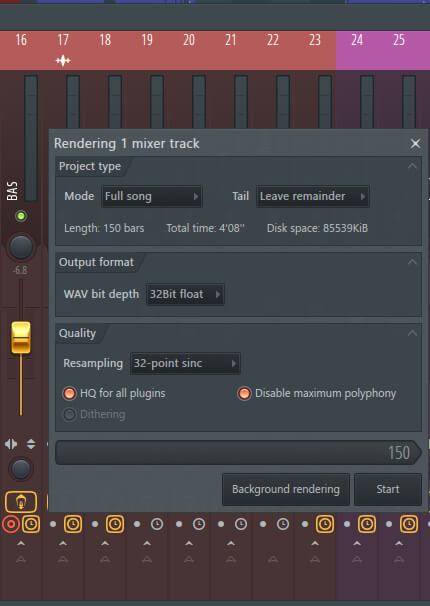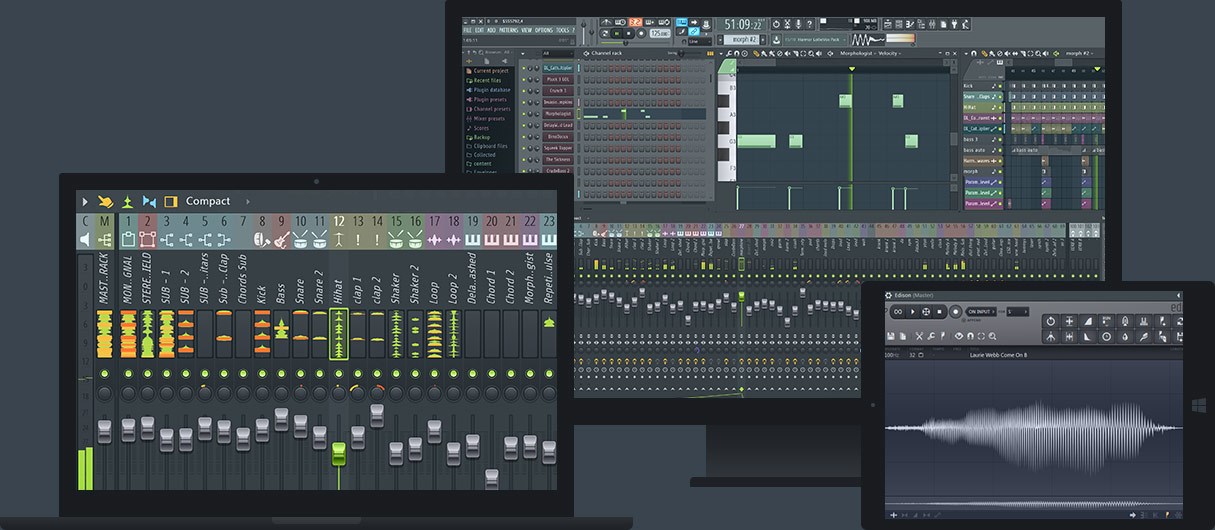If you plan on doing any recording, you are going to have to setup an audio interface in FL Studio. So I’m going to show you how to now.
- Fl Studio Mac Audio Driver Windows 10
- Fl Studio Mac Download
- Fl Studio Mac Audio Driver Downloads
- Fl Studio Mac Torrent
- Asio Driver Mac Fl Studio
- Fl Studio
- Mac Fl Studio
These devices are great for recording and playback. It will cut down on the resources that your computer is having to use to process audio in FL Studio. So let’s talk about what it will take to get you up and rolling with an audio interface in FL Studio.
All FL Studio purchases include Lifetime Free Updates Buy FL Studio now to unlock the latest version and all future FL Studio releases. Nothing to pay, ever again! Because we believe you should have the functionality you paid for, bug-fixed, developed and updated for as long as we develop FL Studio. Sep 07, 2020 An audio driver’s purpose, then, is to ensure that whatever audio device you’re using, whether it’s your computer’s local audio device, or, more preferably, an audio interface you connect to it, is communicating with your software program, such as a digital audio workstation, or audio plugins. AKM322 MAC MIDI editor V0.1: 2019-01-02: 1M: Audiolinkplus4x4 Win64 ASIO Driver: 2018-08-09: 1M: Audiolinkplus4x4 Mac ASIO Driver: 2018-08-09: 853K: Smartface USB 2.9.59 ASIO Driver: 2018-08-05: 2M: Audiolinkplus4x4 win32 ASIO Driver: 2018-08-05: 982K.
FL Studio has not been officially release for Mac OS X, the version you're currently using is Alpha software. Our developers are actively working on improving the Native Mac OS X version, an update was released today. Be aware that we cannot provide an ETA on when it will be entirely stable, and that will be quite some time from now. Frequency Splitter - Split and process audio into 2 or three bands using Linear Phase or Low Latency filters from -6 dB to 96 dB Octave. Glitch free plugin loading - FL Studio audio is far less likely to be interrupted while loading a plugins. NOTE: If a plugin introduces processing latency, then audio glitches can't be avoided. FL Studio has not been officially release for Mac OS X, the version you're currently using is Alpha software. Our developers are actively working on improving the Native Mac OS X version, an update was released today. Be aware that we cannot provide an ETA on when it will be entirely stable, and that will be quite some time from now.
The process isn’t too complicated. And once you do it, you really never have to mess with it again. The steps we are going to cover are:
- Install the latest driver
- Check for Firmware updates
- Select the correct ASIO driver
- Set the Sample Rate and Buffer size
- Start recording!

So let’s get to it.
INSTALL THE LATEST DRIVER FOR AUDIO INTERFACE
Fl Studio Mac Audio Driver Windows 10

Download the latest driver from the manufacturer’s website.
The first thing you want to do is make sure you have the latest and greatest software driver for the interface that you purchased. So jump onto Google, and search for:
Fl Studio Mac Download
Audio interface name + driver
Go to the manufacturer’s website that comes up in the results. And download the latest driver that corresponds to the Operating System you are working with (Windows 7, 10, OS, etc.).
Don’t download drivers from sketchy sites that aren’t the manufacturers. That could end badly.
At this point, make sure that you haven’t connected the audio interface to your computer. Because you want to install the driver before you connect to the interface.
This is an important step to setup an audio interface in FL Studio.
So Install the driver then attach the interface to the computer. It should recognize the audio interface and tell you that the drivers have been detected or some other success message like that.
Fl Studio Mac Audio Driver Downloads
There will probably be an application that gets installed for your audio interface. Open this up and look for a way to check for updates to the firmware. Again, this is just to make sure you have the latest and greatest updates before you start using the interface in FL studio.
Now that we’ve gotten the boring stuff out of the way, let’s move on to getting the audio interface setup in FL studio.
SETUP AUDIO INTERFACE IN FL STUDIO
Open up FL Studio.
Press F10 to bring up the settings window.
Then navigate to the AUDIO tab on the settings window.
ASIO DRIVER SETTING
Under the Device drop down menu you want to select the ASIO driver that corresponds with your audio interface. My interface is a Presonus Audiobox iTwo. The driver for my interface is called AudioBox ASIO Driver.
I’m not going to get into the reasons why you want to select ASIO driver versus DirectSound Device. But the simple answer is that ASIO works better when it comes to processing the audio.
So now that you have the right driver selected, let’s talk about the sample rate.
SETUP AUDIO INTERFACE SAMPLE RATES IN FL STUDIO
You will have a few options, like 44000 Hz or 48000 Hz, or maybe even 96000 Hz or 192000 Hz. This may not make sense, but it is just talking about how many times the audio is sampled per second. So the higher number you pick, the more information it saves, but it also increases the file size of the recordings that you make.
Most common are 44000 and 48000, some people want to do 96000 and above, but you take up a lot more space on your hard drive doing that. I recommend setting it as low as you can without compromising on the quality. 44000 and 48000 are safe bets here.
Just make sure you set the sample rate to be the same on the audio interface application, and in FL Studio. If you don’t, it can cause some errors that will prevent you from being able to record audio in FL Studio. If you change the buffer size, FL Studio will give you a warning that you are about to change the project settings.
The next part of the window is the buffer setting.
BUFFER SETTING
The buffer size rule of thumb is this, you want to go as low as you can on the buffer size when you are recording without creating glitches, pops, and underruns. And then you can increase the buffer size when you move into a mixing phase if you need to.
It’s important to try to set the buffer size as low as you can. When you are recording, if you have the buffer size set higher, you will actually hear what you are recording on a delay, and it can really mess you up.
When you select the buffer size, or click on the button to select the buffer size, it might bring up the application for your audio interface to let you set the buffer size there.
For my audio interface, they call it block size instead of buffer size. So just look for a setting that is similar to buffer size and set it.
When you are done setting the buffer size, you need to check by doing some test recording for a vocal or a guitar or another instrument you run through the audio interface. If you need some help on how to do this, you can check out the article on recording audio. The buffer size is also important on playback of your projects.
Fl Studio Mac Torrent
When you have a large project with a lot of files, samples, instruments, etc. you can start to get glitches and pops when you play it back. So make sure that you understand you can adjust this by messing with the buffer size.
Asio Driver Mac Fl Studio
Again, you are making sure that as you are recording, you aren’t hearing any pops, clicks, or glitches being caused by underruns. And make sure that you aren’t hearing a delay as you are recording.
CONCLUSION
Fl Studio
As you can see, there are only a few steps you need to take to get your audio interface setup in FL Studio:
Mac Fl Studio
- Download the Latest Driver for your Audio Interface
- Check for Firmware Updates
- Select the correct ASIO driver in FL Studio
- Set the buffer size and sample rate to not get glitches
- Enjoy recording in FL Studio